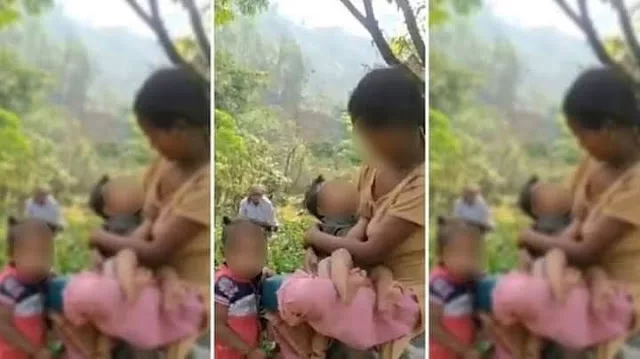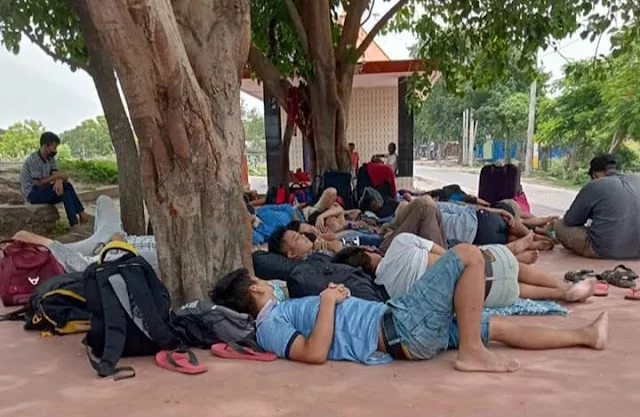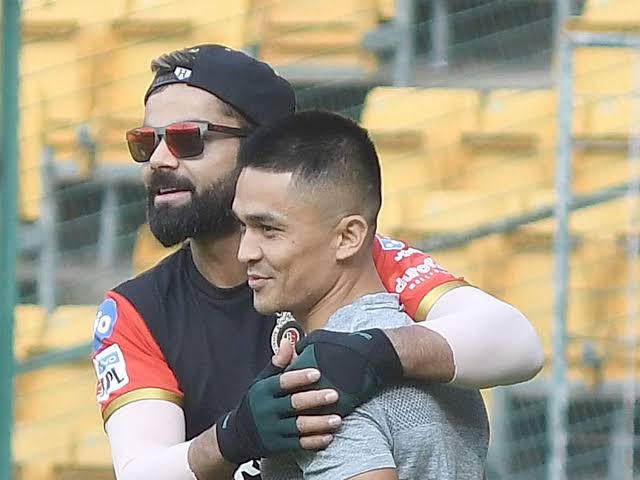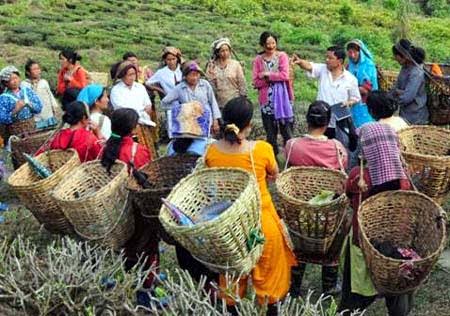“बाँस छ र नै मने छ… मने छ र नै बाँस… धन्न बाँस छ र मने बाँसुरी बजाउँदै हिड्छ… नत्र मने कसैको खुट्टा को काङ्ग्लिङ्ग बजाएर हिड्ने जोगी हुन्थ्यो होला” – सुवास घिसिंग in मने
This quote from his book “Maney” – which I have tried my best to recollect from my memory – is perhaps the closest we will ever come to understand the Man that Subash Ghising was. It gives a rare insight into his psyche, as a young man. The intensity of purpose, and the fierce loyalty towards that purpose is perhaps what best defined Subash Ghising and his political career. Be it his most loyal of supporters, or his fiercest detractors, no one in this world can claim to completely understand him.
 |
| SUBASH GHISING |
Thus, it wouldn’t be wrong to say that for everyone Subash Ghising was a mystery, wrapped in an enigma, inside the Pandora’s box.
This is my humble attempt at eulogizing and paying homage to the greatest politician Darjeeling has ever seen till date.
THE MAN
Born into a humble family on June 22, 1936 at Manju Tea Estate in Mirik, Subash Ghising was the sixth child, out of the seven children his parents had. His father was the garden babu and mother was a homemaker.
Growing up years were difficult of Subash as his father passed away when he was still in class IX, which caused him to leave school and join the Army in 1954. Joining the army was both a blessing as well as a curse, blessing in that it was while in the army he could complete his Matriculation in 1959 and curse in that he could not continue to serve in the army when India still considered all the Nepalis to be foreigners who were Nepali citizens.
In 1960 Subash have had enough of his internal conflict and with a resolve to do something about the “identity crisis” that Indian citizens of Nepali ethnicity faced, he quit the army in 1960 and came back to Darjeeling.
His matriculation served him well and he landed a teachers job at the Tindharey Bangla Primary School in 1961, but he only taught there for a year and left for Kalimpong to acquire a teaching diploma from the Junior BT College in 1962. Subash was a rebellious child, and had grown up to become a rebellious young man, he quit the college midway after an altercation with the college Principal.
In 1963 Subash joined Darjeeling Government College and completed his Class XII degree (which was called Intermediate Degree in Arts or IA degree) from there. After the completion of his IA, he enrolled himself for undergraduate degree at the Darjeeling Government College.
It was during his time at the Darjeeling Government College he found his niche – Politics. He quickly rose through the ranks to become the General Secretary of a local youth outfit Tarun Sangh.
Sadly it was his involvement in politics which got him to quit college in the IInd year, after he was arrested during a political rally protesting against the poor socio-economic condition of the hill people.
HIS POLITICS
Perhaps tt was his a harbinger of times to come, Subash eventually formed his 1st political organization ‘Nilo Jhanda” to highlight the various socio-economic deprivation hill people had to face in the year 1968. My mother tells me that during the decade of 1968 to 1978, no one in Darjeeling took Subash Ghising seriously, however he would never was relentless in his endeavour.
Let me recall for you all an incident which I heard from my mother and highlights his fierce determination and sense of purpose, my mother recalls, “back around 1970s Subash Ghising was pretty much a one man show… he would carry with him a flag and a dhondhoro – horn and go from village to village, speaking on whatever issue tickled his fancy that day… one had he was doing the same at a dara near Rangbull bazaar when an individual irritated by his voice emanating from the loud dhondhoro chased Subash with a Khukuri in his hands… Subash ran to save his life… he must have disappeared for a while and surfaced after a few days.. at the same spot… and he started his speech exactly where he left with the words… ‘astee mali khednu bhanda aghee mailey bhandai thye….” The other person apparently did not bother to chase him this time around.
His quest for political relevance saw Ghising join Prant Parishad where he his fellow contemporaries included Indra Bahadur Rai, Madan Tamang amongst others, and for the first time On 22 April 1979, Subash raised the demand for a separate state for the Nepali-speaking people of the Darjeeling region.
During his Prant Parishad days, Subash’s rhetoric and the issues he spoke on attracted a considerable support from the youth, which eventually culminated in him forming a separate political outfit, which he called the Gorkha National Liberation Front (GNLF).
THE LEGEND
While most people naturally assume that Subash Ghising demanded Gorkhaland for the sake of the Darjeeling hill populace, but nothing can be further from the truth. History should never be viewed in isolation, it needs to be seen holistically, because the cause and effect relationship which is so apparent in Physics, does not hold true in Politics. To understand Subash Ghising and his politics of demanding “Gorkhaland” – a separate state for the Gorkhas in India – you have to understand what was happening or had happened till that point in time, and that is where and why Subash Ghising attains the status of a LEGEND in my view.
The ambiguity surrounding the “citizenship” of Nepalis in India had always been a bone of contention between the Indian citizens of Nepali ethnicity and the Indian mainstream. In order to resolve this a delegation of the then Akhil Bharatiya Nepali Bhasa Samiti met the then Prime Minister Morarji Desai in 1977, with a request to include Nepali as one of the officially recognized languages of India under the 8th Scheduled of the Indian Constitution, they had pleaded, “the long-cherished aspiration of over 5 million Indians with Nepali as their mother-tongue who suffered from a sense of insecurity because of the exclusion from the Scheduled… the inclusion of Nepali would bring about the development of a linguistic minority and emotional integration of the Nepali speaking people in the Indian mainstream.”
Stupid Mr. Morarji Desai not only outright rejected the proposal, but added further humiliation on the delegates by saying, “Why are you giving me this petition? I think you should be submitting this petition to your King?” He was referring to Nepal. It is said that when the delegation tried to persuade Morarji Desai about the contributions Gorkhas had made in India, he is supposed to have remarked “You people come to join the army and to live in different parts of India. Shall I stop the recruitments of Gorkhas in the Indian Army? We give you an inch and you want it all?”
As if the humiliation meted out by the then Prime Minister was not enough, Nepalis living in North Eastern states were made to leave their homes and rendered homeless. Showing Article 7 of the Indo-Nepal Friendship Treat of 1950 which reads, “The Governments of India and Nepal agree to grant, on a reciprocal basis, to the nationals of one country in the territories of the other the same privileges in the matter of residence, ownership of property, participation in trade and commerce, movement and other privileges of a similar nature,” as an excuse, the Nepalis who had been residing across the North East of India for centuries were labeled as “Foreigners” and were asked to either “prove their citizenship” or “leave the land.”
It is estimated that due to the “Bhumitputra” movement, all over North East close to 45000 thousand ethnically Nepali Indians were asked to leave their native place, as a result of which over 8000 Nepali speaking people were kicked out of their homes in Mizoram in 1967. In Assam the figures were close to 20,000 in 1979. In Meghalay over 17000 Nepalis had been expelled by 1980 and in Manipur close to 2000 by 1980.
These two incidents had tremendous impact on how Subash viewed the issues of Gorkhas living in India. That is what led him to form a political party the Gorkha National Liberation Front (GNLF) on 5 April 1980 and coined the term “Gorkhaland,” and rest as they say is history.
His political acumen can be understood in the fact that the flag of his political party itself carried his political philosophy, vision and agenda which he set out to fulfill. He explained the GNLF Flag as follows:
Khukuri: जातीय चिन्ह Racial Symbol
Three stars: लक्ष्य Destiny [Mission]
Colour Green: आत्म विश्वास Self Confidence [Green = Youthful as in spring]
4 Golden Lines: समानता स्वतन्त्रता भ्रातित्व अवसर – Equality, Liberty, Fraternity, Opportunity
It was only in 2011 that he finally divulged his three goals/destiny/mission, as represented in the three stars on the GNLF Flag
He explained that for any community to survive and thrive it requires three key things – i) Citizenship, ii) Identity as a community within a country and iii) protection of our culture and traditions, this he represented through the three stars on the GNLF Flag he would set out to achieve. The three stars symbolized
The 1st Star – “Citizenship”
Back when he launched the Gorkhaland statehood movement, the ambiguity surrounding the citizenship of the Indian born people of Nepali ethnicity was in question, which is why Nepalis were being expelled from all over North East. So for Subash the “Gorkhaland” movement wasn’t merely launched to seek statehood for the people of Darjeeling, but to protect Indian Gorkhas from expulsion from all over India – be they from Bhagsu in Himachal or the Gorkhas of Jayanti and Garo Hills in Meghalaya, he wanted protection for all.
He repeatedly said that DGHC and whatever administrative set up came as a result of the movement was a bonus, his primary objective was to ensure that constitutional guarantee of Indian Gorkhas were assured.
Indeed the Government of India following the signing of the Darjeeling Gorkha Hill Council (DGHC) accord issued an Extraordinary Gazette Notification on the issue of Citizenship issue of Gorkhas, which was published on the 23rd of August 1988, in the Gazette of India Extraordinary Part – I Section 1 No. 26011/6/88-ICI. Stating the following facts:
“Whereas it has come to the notice of the Central Government that there have been some misconception about the citizenship at the commencement of the Constitution of India of certain classes of person commonly known as Gorkhas, who had settled in India at such commencement.
And whereas it is considered necessary to clear such misconception it is hereby clarified as follows:
(1) As from the commencement of the Constitution, that is as from 26-1-1950, every Gorkha who had his domicile in the territory of India, as defined in Article 1(2) of the Constitution of India and
a. Who was born in the territory of India or
b. Either of whose parents was born in the territory of India.
c. Who had been ordinarily resident in the territory of India for not less than five years before such commencement shall b e a citizen of India as provided in Article 5 of the Constitution of India”
This notification solved the ambiguity surrounding our citizenship, and the issue was forever resolved.
The 2nd Star – “Identity”
It is to the credit of Subash that the term “GORKHA” was added to the 1st administrative set up of the Darjeeling region, the Darjeeling Gorkha Hill Council, as powerless as it may have been, was the 1st administrative body ever in India which included the term “GORKHA” in it. Later the GJM championed the “Gorkhaland” cause and now we have “Gorkhaland Territorial Administration” which is equally as powerless as DGHC, but at least we have progressed from Gorkha Hill Council to Gorkhaland Territorial Administration. And someday soon this will lead to Gorkhaland statehood.
So Subash deserves applause for awakening the sleeping Gorkhas, and making us face the reality, and also helped us to realize that united we were a political force. My younger brother Shailendra stated it better, he writes “in the context of his work – when we did not have any slightest idea of collective identity – and to struggle for it against a state like Bengal and the Indian government deserves our highest salutation… on hindsight, he is to us, what Mahatma is to India – he is that…”
The 3rd Star – “Protection of Our Culture and Traditions
For any community anywhere in the world to thrive the conservation of their language, traditions, culture and other socio-cultural traits are a must. Back in the census of 1931, the British had included all the hill people as one unity and had categorized us as “Hill Tribes.” As the DGHC did not have any legislative power granted to it, Subash pursued the easiest route to getting autonomous legislative powers – through the inclusion of the Darjeeling region and all the communities residing here under the Scheduled- VI of the Indian constitution.
Under the British areas with considerable “tribal” population were given administrative freedom by forming Excluded and Partially Excluded areas where the laws developed in the rest of the country would not be automatically be applicable, unless it was expressly mentioned, thus granting the tribal regions autonomy over developing specific legislations that would be more applicable to the specific region. Darjeeling, Terai and Dooars were one such partially excluded areas.
Subash had envisioned that by bring in Darjeeling under the Schedule VIth of the Indian Constitution, we would finally get legislative power that would eventually lead to the formation of Gorkhaland statehood, and if we are to check history almost all the states in North East except Assam were at one point of the other governed under the Scheduled VIth of the Indian constitution. So this he believed would ensure the protection of our unified identity as “Hill Tribes” as mentioned by the British back in 1931.
The Bengal government had even approved the inclusion of Darjeeling region under the VIth Scheduled of the Indian constitution back in 2005 itself, but it needed constitution to be amended and as the CPI(M) was at loggerheads with the UPA government over the Nuclear deal issue, the Bill never got introduced in the Parliament. Had it been approved, we would all have a very different political set up in Darjeeling currently.
If nothing else, perhaps we would not be clamouring for ‘Development Boards’ for each individual Jat… as Shailendra rightly pointed out, “to infuse in people – divided on the lines that is manifesting itself now – that sense of belongingness is a great great achievement in itself… to bring “Gorkhaness” in all of us was his biggest contribution…”
Thus, from my count he had managed to achieve all that he wanted to at the outset of his political journey, and for that reason alone he deserves to be called A POLITICAL GIANT.
THE LEGACY
Never before in the history of politics from Darjeeling region did we ever have a leader with the political acumen, and sense of political timing as Subash. From a very close quarter I have observed him use various political terms with which we wouldn’t even be familiar today if it wasn’t for him – terms like “Gorkhaland,” “Leasehold land,” “Ceded land,” “No Mans land,” “Hague,” “Article 371,” “Sugauli Sandhi,” and Schedule Sixth.” It is to the genius of his political timing I attribute the fact that when the rest of India was awaiting a BJP win for the 2nd term, Subash had supported Congress in 2004. Congress won and formed the UPA – I government, I was befuddled.
But perhaps it was this very political acumen in which lies his flaw, and thus leaves a very chequered legacy behind.
The Gorkhaland andolan of 1986 did help in protecting and asserting the rights of the Gorkhalis across India, but it left behind close to 2000 dead. Families were torn apart, neighbours became enemies, brothers ended up killing each other. An entire generation of youths lost their life, limb and the future to the cause of Gorkhaland but at the end he deceived them by accepting a powerless DGHC.
But much worse than that, Darjeeling lost its innocence. The Gorkhaland andolan turned simple, happy go lucky hill youths into a brutal, cunning and greedy bunch of good for nothing louts. People learned how to deceive, steal, cheat, lie and murder. Whereas prior to 1986 the death of a dog would make news, post 1986 killing of people became so common place that we became indifferent to such acts of savagery and brutality.
It was under Subash Ghising the rule of the latthi (rod) became the rule of the land. Dissenters were murdered, political opponents silenced, and any criticism was met with iron fist. The best example of this was seen when he got Bhanu Bhakta ko statues across Darjeeling to be beheaded during the Nepali vs. Gorkha language recognition debate. He ruled with complete impunity and we let it happen. Eventually he became an egomaniacal despot, and we supported his ascension.
In short, as a result of 1986 andolan, Darjeeling lost its innocence, humbleness, humility and honesty. People of Darjeeling became crooks.
Bimal Gurung is a direct product of Subash Ghising’s legacy, need I say more?
But can we blame Subash alone for this?
Weren’t the then CPI(M) and the current CPRM lot equally responsible for what happened? Isn’t the state of West Bengal and the Central Government just as responsible for what happened to Darjeeling? Aren’t we the people equally responsible for letting him slip away, instead of keeping him on the tracks by handing him a few electoral defeats?
However, the fact that it was him who first awakened us to our political fate, who informed us on our rights and wrongs, who taught us that as a collective we mattered. It was him who brought down the mighty Bengal government to its knees and forced them to settle. It was him whose clout was such that not just the Bengal, but even the Indian government did not meddle with the running of the DGHC or Darjeeling, where as today, even a puny DM keeps on harassing the GTA and GJM officials.
It was him who brought out in us a sense of dignity, self worth, and confidence. It was him to whom we can attribute the political awakening amongst Gorkhas not only in Darjeeling, but across India, which has served all the Gorkhalis everywhere in India so well.
Today if a Gorkha from North East can walk with his head held high, some of that self-assurance and pride can be attributed to Subash Ghising. Today if a Gorkha from Uttarakhand or Bhagsu can contest an election and win, there is a certain amount of political capital that can be traced back to Subash Ghising. Today if any Gorkha anywhere in India feels proud to call oneself an Indian, it is expressly because of Subash Ghising.
Amongst all the poets, writers, thinkers, ideologues, philosophers, intellectuals, strategists, academic, scholars, artists, musicians, rebels, misfits, renegades, radicals, dissenters, mutineers and politicians tof all hue and colours, that Darjeeling has produced, NO ONE… has ever come even close to the aura, the charm, the personality and the sense of being that Subash Ghising exuded.
Today if despite Mamata’s best and worst attempts, we continue to remain a solid unit… and despite all the worst atrocities we still continue to dream of Gorkhaland… it is because and only because of SUBASH GHISING.
A LEGEND UNPARALLELED
Source: The Darjeeling Chronicle






